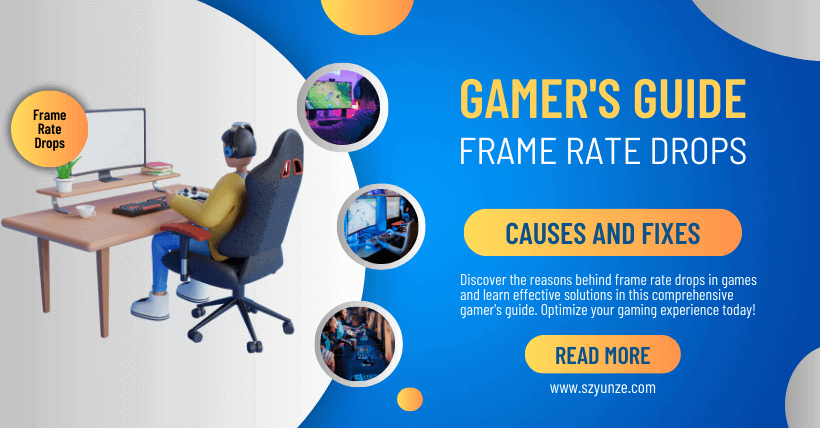Frame dropping refers to the phenomenon in video playback or gaming where, due to various reasons, the images cannot be smoothly displayed. It is typically manifested as screen freezing, jumping, and latency. This article will provide a detailed explanation of the causes, impacts, and solutions to frame-dropping issues.
01
Understanding Frame Rate Drops
What is the Frame Rate?
Frame rate refers to the number of frames displayed per second in a video game. A higher frame rate results in smoother gameplay, while lower frame rates can lead to choppy and laggy visuals.
Causes of Frame Drop Phenomenon
- Insufficient System Performance: When the processing capacity of a computer or other device is insufficient to support high loads of video playback or gaming, it may lead to a frame drop phenomenon.
- Insufficient Graphics Card Performance: The graphics card is responsible for processing image data, and if the graphics card performance is inadequate, it may also lead to frame drops.
- Network Issues: During online gaming or streaming of online videos, network latency, packet loss, and other issues may result in the frame drop phenomenon.
- Software Compatibility Issues: Sometimes, compatibility issues between software and hardware may cause a frame drop phenomenon.
- Excessive System Resource Usage: When system resources are heavily occupied by other programs, it may lead to a decrease in video playback and gaming performance, thus triggering the frame drop phenomenon.
02
Effects of Frame Drop Phenomenon
- Impact on Viewing Experience: The frame drop phenomenon may lead to video stuttering, jumping, latency, etc., affecting the user’s viewing experience.
- Impact on Gaming Experience: During gaming, the frame drop phenomenon can result in non-smooth gameplay, affecting the player’s gaming experience.
- Impact on Device Performance: Prolonged frame drop phenomenon may lead to issues such as device overheating and decreased performance.
03
How to Resolve Frame Drop Issues
- Improve System Performance: Upgrade hardware components such as the processor and memory to enhance system performance.
- Upgrade Graphics Card: Purchase a higher-performance graphics card to improve image processing capabilities.
- Optimize Network Environment: Ensure a stable network environment, increase network speed, and reduce network latency and packet loss.
- Software Optimization: Update drivers, operating systems, and relevant software to improve software and hardware compatibility.
- Close Unnecessary Programs: When playing videos or games, close unnecessary background programs to reduce system resource usage.
- Lower Graphics Quality Settings: In gaming or video playback software, appropriately lower graphics quality settings to lighten the device’s load.
- Clean System Junk: Regularly clean system junk and optimize system settings to enhance device performance.
- Cleaning Dust and Debris: Regularly cleaning your computer’s internals ensures optimal cooling and performance.
- Proper Ventilation: Ensure your gaming setup has adequate ventilation to prevent overheating.
04
Conclusion
By understanding the causes of frame rate drops and implementing the fixes mentioned in this guide, you can enjoy uninterrupted, smooth gaming experiences. Say goodbye to frustrating lag and hello to immersive gameplay.
Related:
- Should You Place Vias Directly on Pads? Find Out Now
- Performance Showdown: RX 6750 XT vs RTX 4060 Ti
- Core i7 7700K & GTX 1080 Ti: Latest Gaming Performance
- RTX 4070 SUPER or RX 6900 XT? Gaming Test Results

Disclaimer:
- This channel does not make any representations or warranties regarding the availability, accuracy, timeliness, effectiveness, or completeness of any information posted. It hereby disclaims any liability or consequences arising from the use of the information.
- This channel is non-commercial and non-profit. The re-posted content does not signify endorsement of its views or responsibility for its authenticity. It does not intend to constitute any other guidance. This channel is not liable for any inaccuracies or errors in the re-posted or published information, directly or indirectly.
- Some data, materials, text, images, etc., used in this channel are sourced from the internet, and all reposts are duly credited to their sources. If you discover any work that infringes on your intellectual property rights or personal legal interests, please contact us, and we will promptly modify or remove it.



